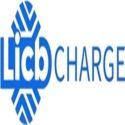Notifications

5 minutes, 31 seconds
-0 Views 0 Comments 0 Likes 0 Reviews

As a leading EV charger manufacturer in China, LiCB Charge delivers reliable AC and DC electric vehicle charging stations along with comprehensive charging solutions.
As electric vehicles (EVs) gain momentum worldwide, the infrastructure that powers them—particularly charging systems—is evolving rapidly. At the heart of this system are EV chargers, with Type 1 and Type 2 connectors being the most widely used, depending on the region.
Understanding the key differences between these two standards is essential for EV owners, potential buyers, and industry professionals. The charging connector on a vehicle must match the plug of the charger for safe and efficient power transfer. An incompatible setup can lead to slow charging—or no charging at all.
In this guide, we’ll explore how Type 1 and Type 2 chargers differ in design, power capacity, safety, and regional usage, helping you make informed decisions about EV charging.
Type 1 chargers are most commonly used in North America and parts of Asia, and are also known by their technical name: SAE J1772.
Features a 5-pin round connector
Operates on single-phase AC power
Lacks a built-in locking mechanism (requires a manual clip for secure connection)
Delivers 3.6 kW to 7.4 kW, suitable for home charging
Not ideal for high-speed charging or frequent public use
Nissan Leaf (older models)
Mitsubishi Outlander PHEV
Chevrolet Volt and Spark EV
Ford Focus Electric (early models)
Kia Soul EV (some variants)
Type 2 chargers, also known as Mennekes connectors, are the standard across Europe and are gaining popularity globally.
Oval-shaped with 7 contact pins
Supports both single-phase and three-phase AC
Equipped with a built-in electronic locking mechanism for added safety
Single-phase: Up to 7.4 kW (like Type 1)
Three-phase: Up to 22 kW, ideal for public or semi-fast charging stations
Tesla Model 3, Model S (EU versions)
Audi e-tron
BMW i3 and i8
Mercedes-Benz EQ series
Renault Zoe
Hyundai IONIQ 5, Kona Electric
Volkswagen ID.3, ID.4
| Feature | Type 1 (SAE J1772) | Type 2 (Mennekes) |
|---|---|---|
| Connector Shape | Round, 5-pin | Oval, 7-pin |
| Power Supply | Single-phase only | Single- and three-phase |
| Max Charging Power | Up to 7.4 kW | Up to 22 kW (three-phase) |
| Locking Mechanism | Manual or clip-based | Automatic electronic locking |
| Region | North America, Japan, South Korea | Europe, expanding globally |
| Public Charger Access | Limited outside native regions | Widely supported in public infrastructure |
Your EV is built for North American or Asian markets
You primarily charge at home using a single-phase supply
You don’t need fast or public charging frequently
You live in or travel through Europe or other global regions
You value faster charging (up to 22 kW)
You use public or semi-public chargers regularly
You prefer the safety and reliability of automated locking
As the EV landscape matures, charging technologies are rapidly advancing. While Type 1 and Type 2 dominate AC charging, DC fast charging is becoming more common for long-range travel.
CCS (Combined Charging System): Based on Type 1 or Type 2, with two added DC pins for ultra-fast charging
CHAdeMO: Used primarily in Japan, though declining in global relevance
Type 2 + CCS is increasingly being adopted as the global standard, thanks to its versatility and speed.
With governments and automakers pushing toward standardization, Type 2 and CCS connectors are expected to lead the market in the future.
Choosing between Type 1 and Type 2 EV chargers boils down to location, EV model, and your charging habits.
Type 1 is best for users in North America or Asia who primarily charge at home.
Type 2 offers more flexibility, faster charging, and global compatibility—making it a more future-proof solution.
As electric mobility continues to expand, understanding charging standards like Type 1 and Type 2 will help consumers and businesses make smarter, more sustainable decisions.Know more about Google SEO Directory
China EV Chargers EV Charger Manufacturer Smart EV Chargers Electric Car Chargers Electric Vehicle Chargers Electric Car Charging Stations

